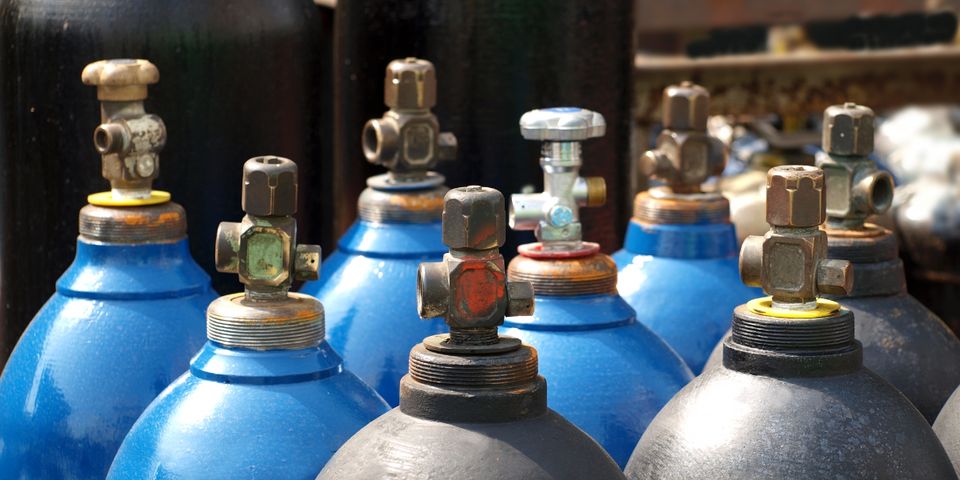How to Safely Handle Compressed Gas Cylinders

Whether you craft custom iron fences or repair cars, compressed gas cylinders are industrial staples for a wide variety of business owners. However, while you might be used to seeing these around, gas cylinders require skill and caution at every use. For your and your employees' safety, use this guide to remind yourself of the best practices for handling compressed gas.
A Brief Guide to Handling Compressed Gas Cylinders
Storing
Before storing the gas cylinders, always top them with the appropriate valve protection cap and clear away any nearby hazardous materials. This includes heat sources, explosives, and corrosive elements. The storage space you choose should be enclosed yet well-ventilated, so temperatures stay well under 125 degrees.
To prevent your gas cylinders from falling over and potentially exploding, you’ll need to secure them to their storage spaces. Position metal chains or tough straps about 1/3 of the way down from the top of the cylinder, and tie them to the rack or wall mount behind them. Then, use another tether closer to the base of the cylinder to prevent it from sliding out. Essentially, even if there is an accident or an employee accidentally runs into the shelf, your gas cylinders should remain stationary.
Moving

When transporting gas cylinders, remove them one by one from their storage spaces and secure them to a hand truck or dolly. Strap them to this mobile device just as you did when storing them.
Leave the safety caps on, and walk at a steady pace, taking care to avoid bumps or holes in the ground. Cylinders should never be allowed to jostle around during transport, bump against one another, or get dragged along the floor, as this could aggravate the pressurized gas inside.
Handling
Before using a gas cylinder, make sure you’re in a suitable environment. You should be at least 20 feet from heat sources, combustible materials, and oxidizers in an open, airy room. Once the cylinder is free from the hand truck, inspect it for signs of damage. Rusting or leaking gas cylinders should not be handled.
Before attaching hoses or regulators, ensure they are specifically designed for the gas cylinder on hand. Once the gas cylinder is safe for use, stand up and angle the valve outlet away from your body. Ask all other employees to move out of the valve’s path before slowly and gently opening the valve.
From oxygen to carbon dioxide, the professionals at Wayne Oxygen & Welding Supply Co. know just how essential compressed gas cylinders can be to their commercial clients. That’s why this Waynesboro, VA, company has been providing top-quality welding supplies to businesses since 1959. Whether you’d like to buy, rent, or lease their equipment, you can stock your workspace with the tools that will render the best results. To learn more about their accommodating staff, visit the website or call (540) 942-4145 to speak with them.
About the Business
Have a question? Ask the experts!
Send your question

